Overview, Examples & Software
Production Monitoring
By monitoring equipment, processes and resource utilization in real-time, companies can identify downtimes, inefficiencies, error sources and trends. This page provides an overview of modern production monitoring and shows examples of various monitoring tools and solutions.
Benefits
How do manufacturers benefit from production monitoring?
Equipment failures and production downtimes can lead to significant financial losses – even more so, when critical infrastructure is affected or important orders cannot be fulfilled on time. In the latter case, companies may even incur contractual penalties and loss of reputation.
It’s therefore no surprise that many manufacturers invest quite heavily in monitoring their production processes to minimize the chance and impact of such disruptions.
Keeping an eye on relevant parameters in real-time not only enables quick reactions to urgent problems, but also serves as a preventative measure: In the ideal scenario, error sources are identified and rectified before they can lead to failures or even risk to employees.
But production monitoring does more than just prevent damage because tracking various metrics also helps identify areas for improvement. These improvements can be quite diverse and range from more efficient machine utilization to the avoidance of unnecessary work steps.
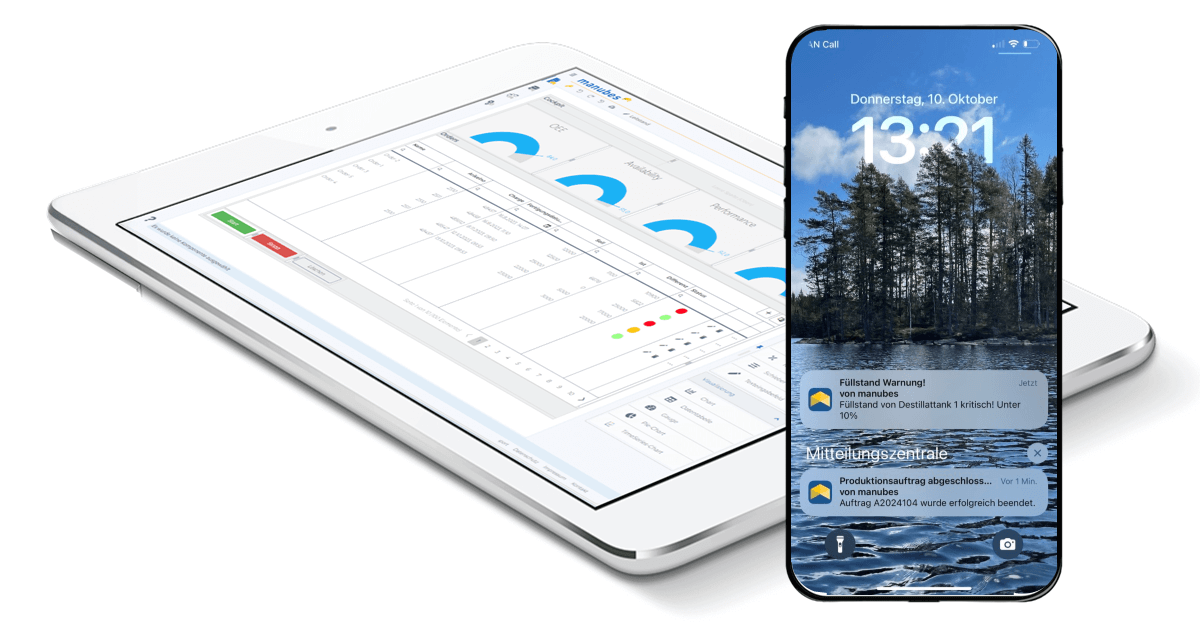
manubes: Production monitoring with real-time dashboards and push notifications
Examples: Identifying optimization potential through production monitoring
- Identification of time loss due to changeover procedures and suboptimal machine utilization
- Improved production planning through access to (historical) data on equipment availability and performance
- Detection of bottlenecks
- Minimizing waste through analysis of error sources
- Saving capacity for data procurement and organization
- Enablement of data-driven decision-making
- … and many more
Production monitoring is one of the most important sub-tasks of production management. Monitoring the relevant areas of production is a prerequisite for effective production planning and production control.
Procedure
Which areas of production should be monitored?
Modern production environments generate large amounts of data that can be used in production monitoring. Common data sources include PLCs and sensors but also human inputs. This data is often aggregated in lower-level software systems and databases but can also be transmitted directly to ERP and cloud systems.
For individual machines, manufacturers commonly record production time as well as times for set-up processes, maintenance, cleaning and similar activities. This not only keeps track of general productivity but also breakdowns and their frequency – both longer-lasting downtimes as well as shorter stops.
Many machines are also able to provide information such as error codes, which help to quickly localize problems and are ideally communicated immediately to the responsible teams (e.g. via automated notifications).
Recording the quantity and quality of the goods produced is another important element of production monitoring. While the production quantity is usually recorded automatically, the data on the quality of a finished product, intermediate product or material can come from automated checks as well as manual entries. This in turn is used to derive key figures such as the production volume and the reject rate.
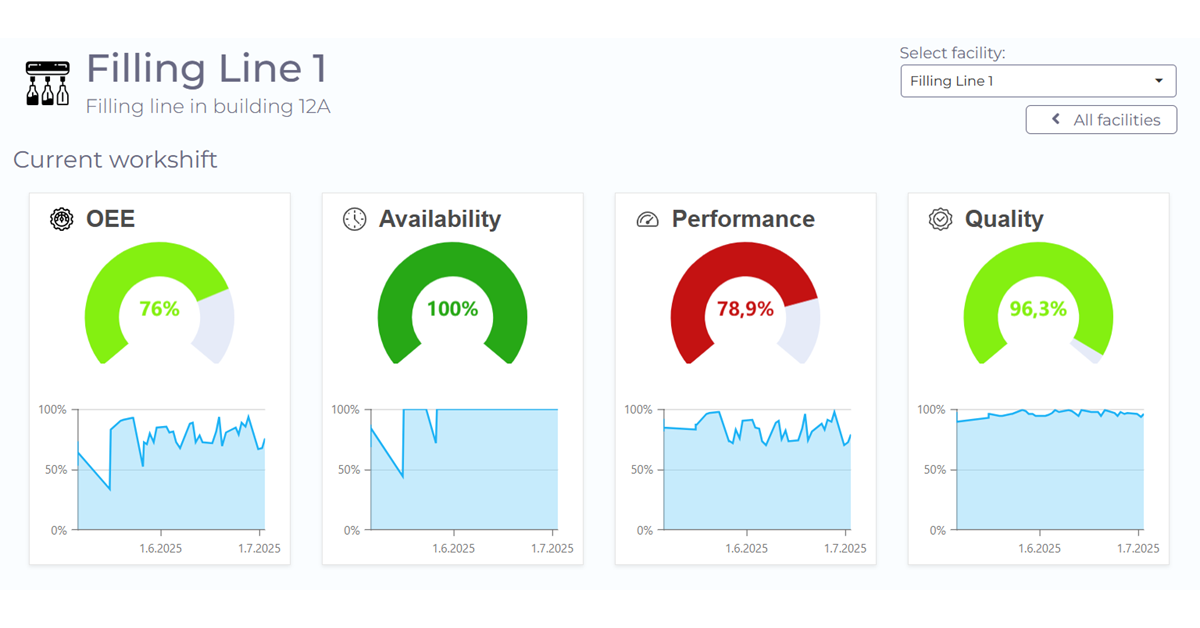
A simple visualization of the Overall Equipment Effectiveness (OEE) metric and its sub-factors with manubes
Addtionally, sensors and other devices capture process parameters that can give closer insights into production processes and indicate potential malfunctions, bottlenecks and similar problems. Examples for such parameters could be the fill level of a tank, the temperature of a melting furnace or the rotational speed of a motor.
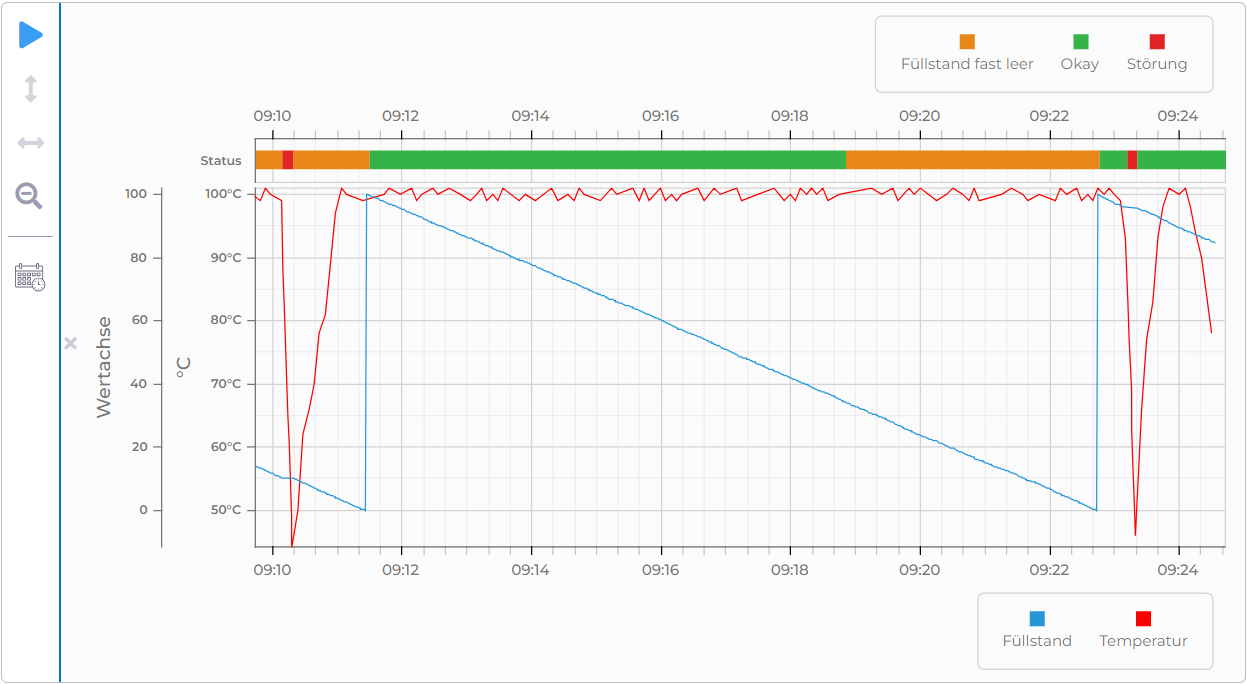
Example for the visualization of temperature and fill level data in production using the manubes Time Series Chart
Depending on the type of production environment, energy consumption or specific environmental measurements (temperature, humidity, etc.) can be key parameters that must be continuously monitored.
To ensure consistent collection and processing of data from different sources, industrial machine data acquisition often relies on standard interfaces and protocols. One of the most important ones is the industrial communication standard OPC UA, which standardizes data exchange between different machines, devices and software systems.
4 ways to monitor production processes with manubes
manubes offers flexible solutions for production monitoring that can be easily integrated into existing structures. Manage production data on a central platform and keep track of asset status, processes and KPIs – anywhere, on every device.
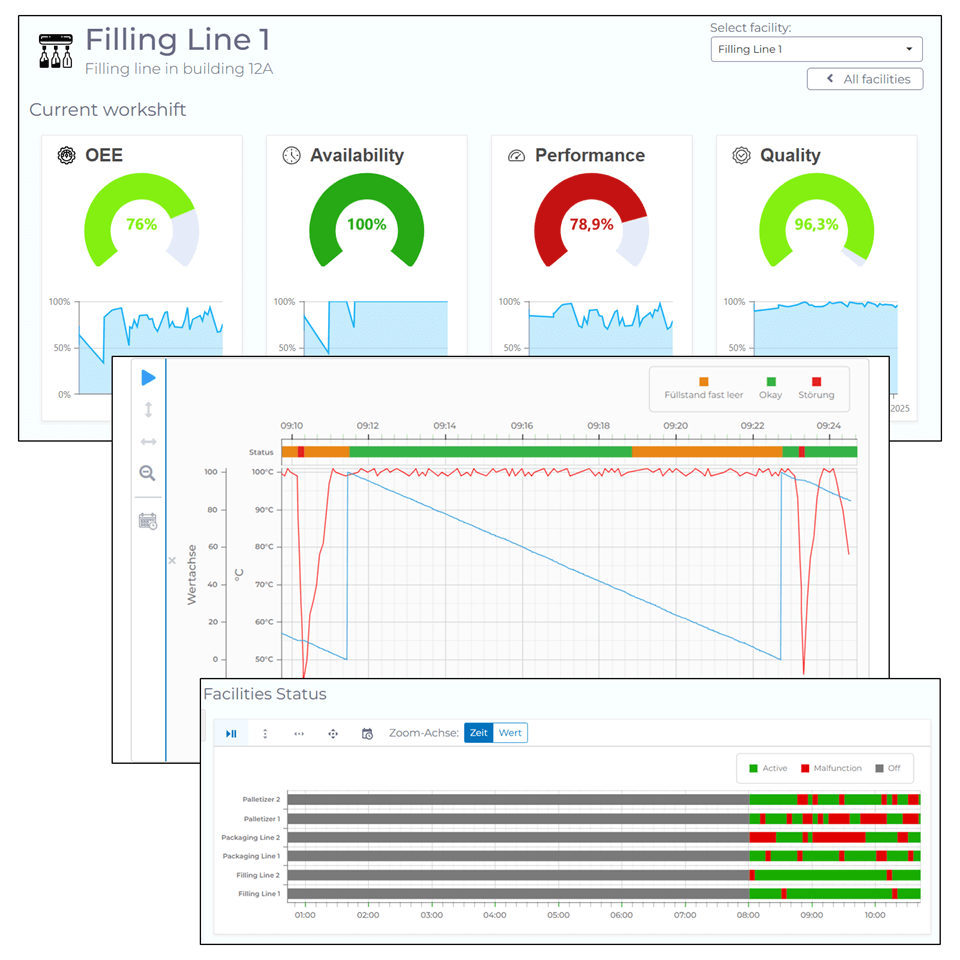
Real-time dashboards
Dashboards can be used to visualize information such as order progress, equipment status, process parameters or selected KPIs. They enable real-time monitoring of critical areas and serve as an entry point for more in-depth analyses.
manubes makes creating custom dashboards super simple: Add visualizations via drag-and-drop and link charts and other elements to real-time data sources in production. Dashboards can be displayed on any device – from smartphones to shop floor displays.
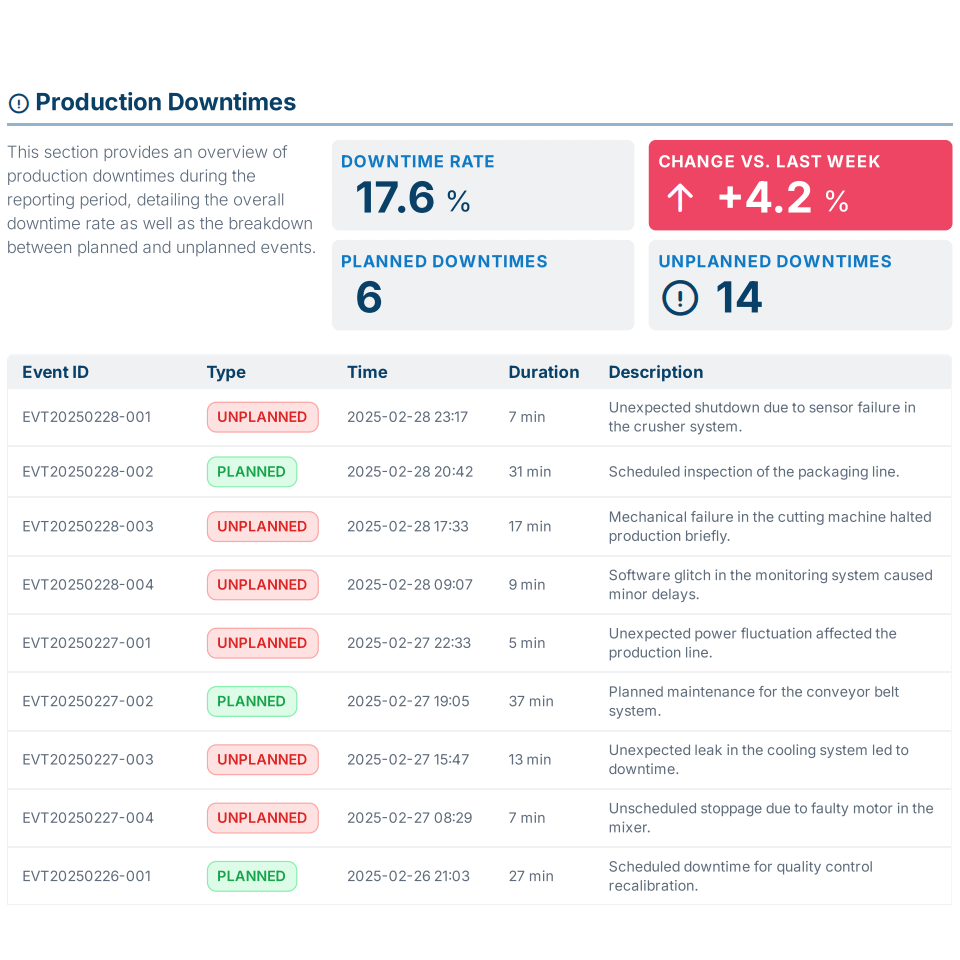
Dynamic production reports
Production reports enable long-term and detailed monitoring of production performance. In addition to clear KPI visualizations that make current trends instantly recognizable, they can also include data tables and other background information.
With the manubes reporting tools, you can create dynamic production reports linked to real-time data sources. Design your own report templates and automate the generation and delivery of high-quality reports using automated workflows.
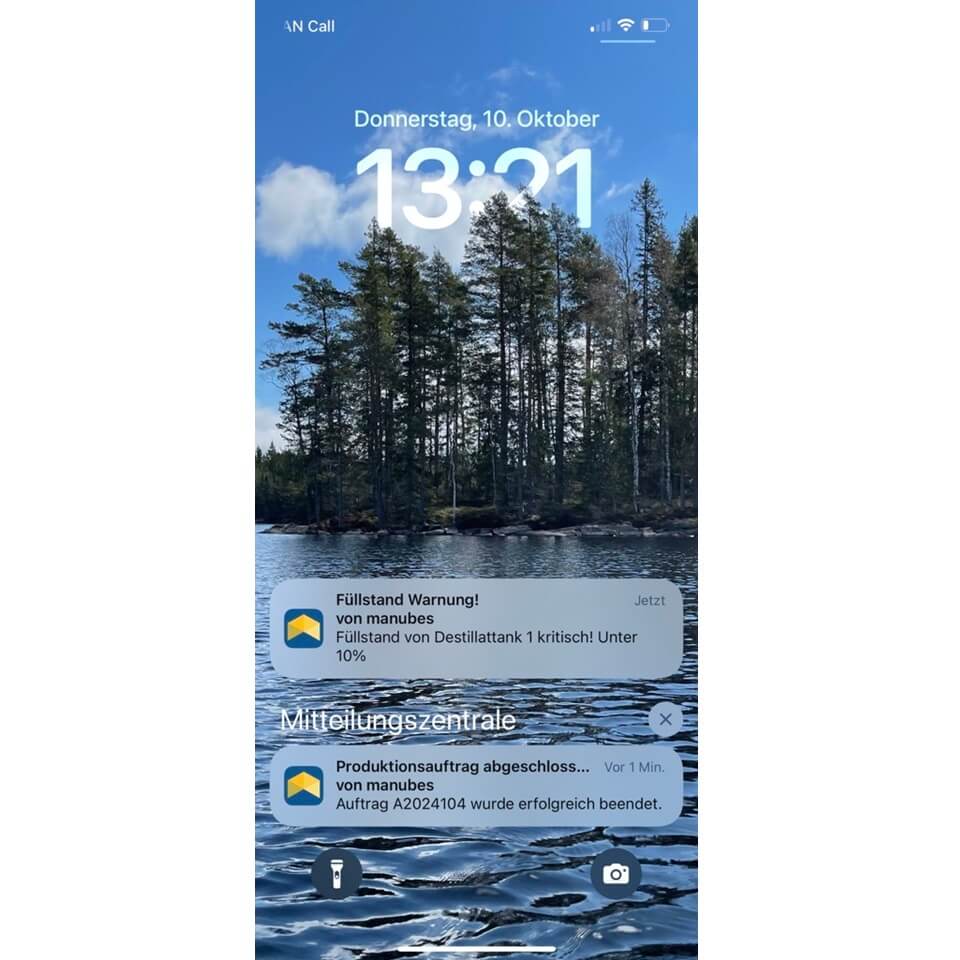
Mobile Notifications
Quick responses are crucial in production. Push notifications can be used to proactively inform responsible personnel when issues occur.
With manubes, you can configure your own notifications for any device and immediately take action in cases of downtime, maintenance needs, material shortages or high energy consumption.
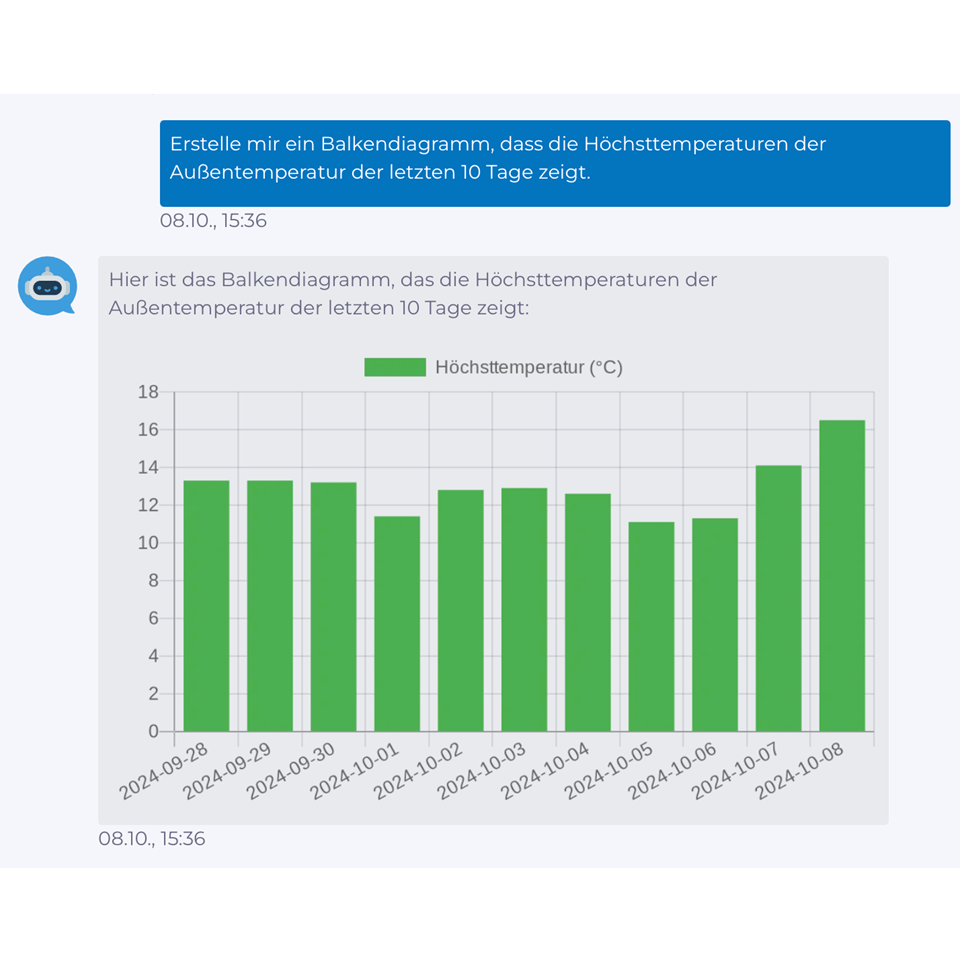
AI-assisted data insights
The manubes Chat Assistant supports production monitoring by providing quick access to the information you need. The AI tool analyzes available data and delivers visually prepared insights on recorded KPIs, disruptions, inventory, orders and much more within seconds. This enables significant time savings in data preparation and greater flexibility in day-to-day production operations.
Software
Software for production monitoring
Due to the importance of production monitoring and the diversity of requirements, there are a large number of software systems that are involved in monitoring individual production areas in a variety of ways.
Some of these are located in close proximity to the production processes, while others are responsible for aggregating and visualizing data at the enterprise level.
Below we take a look at some of the most important software used in production monitoring.
Manufacturing Execution System (MES)
A Manufacturing Execution System (MES) is responsible for controlling and monitoring production processes in real time.
The most important functions of an MES include order management and resource planning, as well as monitoring machine performance, product quality and maintenance history. The documentation and traceability functions of an MES are also highly relevant, particularly in regulated industries.
An MES should be able to record and visualize key production metrics, such as OEE, scrap rate and throughput times.
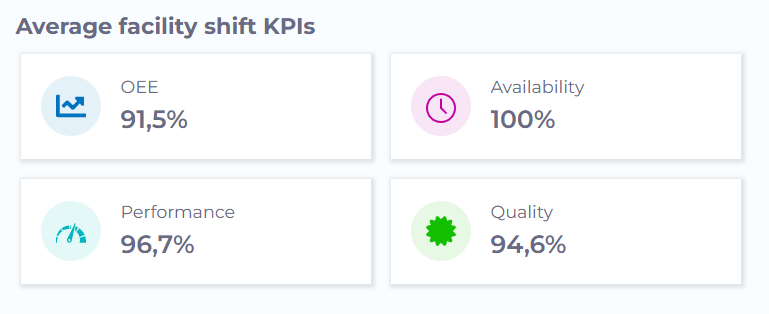
A simple KPI visualization using the manubes KPI Cards
The Manufacturing Execution System serves as an interface between production processes and the higher planning level. It collects data directly from machine control systems and other devices or from other software systems such as SCADA systems and quality assurance systems.
Enterprise Resource Planning (ERP)
The Enterprise Resource Planning system (ERP system) is located one level higher than the MES in the classic automation pyramid and integrates various business processes. As the name suggests, an ERP system focuses on the management of company resources. It supports core tasks such as accounting, procurement, personnel and supply chain management and is intended to facilitate the flow of information between company divisions.
In the context of production monitoring, the ERP system offers a more holistic view of production processes. In addition to key figures from production, an ERP system aggregates plant and employee data, order data and data from other business areas such as warehousing, procurement, sales and finance.
As a result, the ERP system supports the strategic planning and optimization of existing production capacities and ensures that production processes, material requirements and the order volume are optimally coordinated. Furthermore, the company-wide data integration of an ERP system enables the retracing of materials and products in order to identify problems and sources of error. Last but not least, an ERP system also provides valuable information about the costs of production.
Cloud platforms
Cloud platforms of various kinds are increasingly being integrated into production monitoring. Depending on their implementation, they can fulfill a wide range of functions. Cloud platforms are often used to consolidate data from distributed production sites in one central location, allowing for the creation of visualizations that combine or compare production data across all sites.
Cloud computing offers a number of key advantages, particularly in the context of production monitoring.
One of these is accessibility and mobility: In principle, anyone in the company anywhere in the world can access production data in the cloud via a web browser – even on mobile devices. Authorizations can be assigned so that certain groups of people have access to the data and functions relevant to them.
Another advantage of cloud platforms is their scalability. Large cloud providers offer the option of adjusting resource utilization at any time. This makes it easier for companies to include additional locations in production monitoring or to make use of additional functions in line with current requirements.
Our manubes platform is an example of a specialized cloud platform that combines a wide range of production monitoring and production control functions in a powerful and secure cloud environment. manubes users have the option of creating interactive real-time visualizations and dashboards that not only provide insights into any production area, but can also be utlized to directly manage various processes from the cloud.

Transparent Production. Optimized Processes.
Manage production data on a central platform and create your own dashboards, workflow automations and mobile applications.
manubes offers the right tools to optimize your production – flexible and easy-to-use.
Other software applications in production monitoring
In addition to MES and ERP, which usually combine a large number of functions in one product, there are numerous solutions that focus on individual functions. These primarily offer the advantage of a higher degree of specialization, but simpler implementation or lower costs can also be reasons why companies opt for such solutions. One of the key challenges is integrating these software systems into the overall infrastructure.
Examples of more specialized solutions include quality management systems that document data on product quality or software systems to support maintenance. The latter include computerized maintenance management systems (CMMS) and various predictive maintenance tools, which are used to calculate the ideal maintenance time based on available plant data.
Specialized software systems that monitor stock levels or energy consumption, coordinate supply chains or manage safety-relevant information may also be used in production monitoring.
Conclusion
Summary: The importance of production monitoring
Production monitoring is of high relevance to every manufacturing company. It can not only avert financial damage and potential risks to employees, but also forms the basis for a systematic optimization of production processes.
The most frequently monitored areas include system status, production output and product quality. Depending on the specific production environment, numerous other parameters may be relevant.
To what extent certain production areas and parameters are monitored as well as the tools utilized to do so depend on numerous factors, including distinctions between discrete or process manufacturing, industry sector, company structure, budget and openness to technology.
Try manubes for free
Test the different manubes features in your personal cloud environment.
